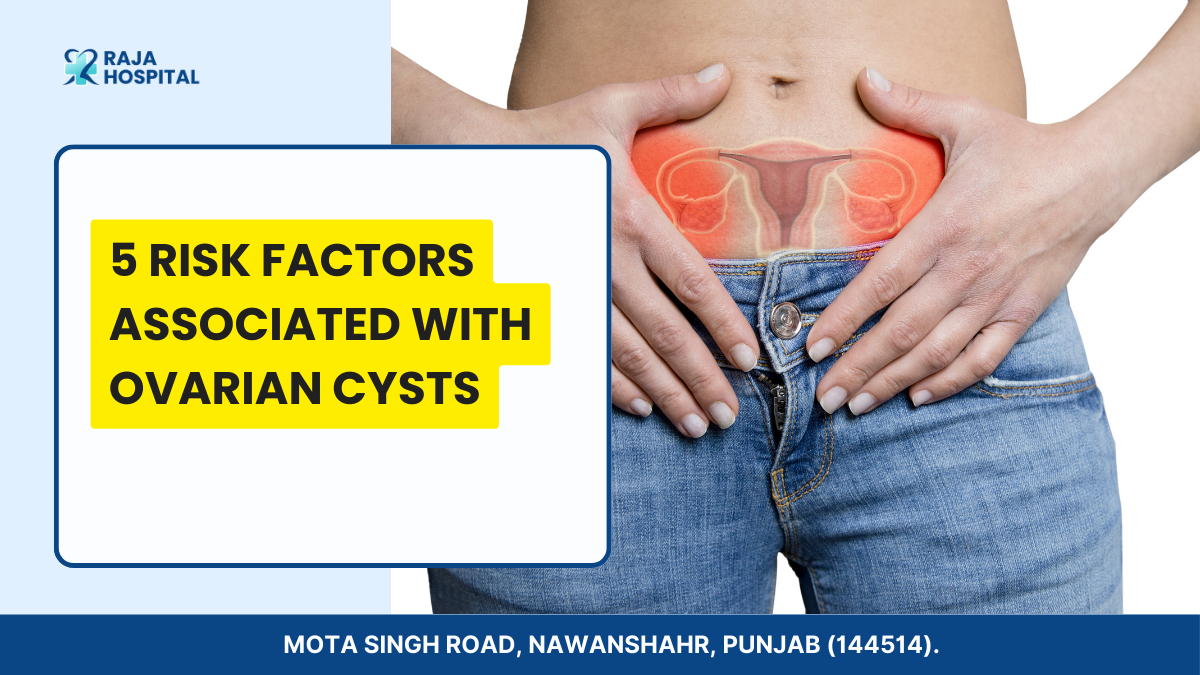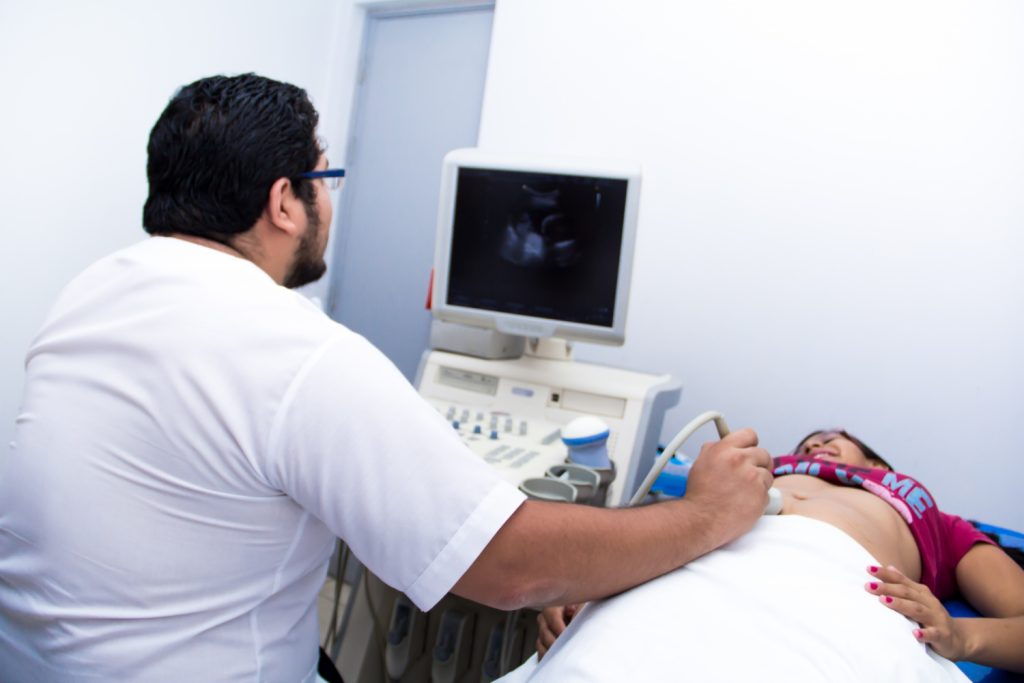5 Risk Factors Associated With Ovarian Cysts

REVIEWED BY DR. LAKSHITA SAINI (MBBS, MS OBS & GYNAE) on 22nd May 2024.
Ever felt like your body was trying to tell you something, but you couldn’t get it? Ovarian cysts are kind of like that—quiet, often unnoticed, but possibly huge. Consider them as uninvited guests at the ovary party. Not that all guests are troublemakers, but you need to know which of them may be the troublemakers. By the end of this article, you will have information that provides you with being a keen listener to the whispers that your body makes and enables you to take action if needs be. Let’s decode this mystery together and ensure your ovarian health is nothing short of excellent.
What is an Ovarian Cyst?

Ovarian cysts are fluid-filled sacs that develop on or in an ovary. Although most women will develop ovarian cysts at some point in life, most ovarian cysts are generally benign and tend to go away on their own within a few months. However, sometimes these cysts rupture, an event known as ovarian cyst rupture. There may be a condition presenting symptoms from mild discomfort to severe pain and complications; thus, it needs good apprehension and prior response to such incidences.
Types of Ovarian Cysts
Ovarian cysts come in various types, each with its own characteristics:
- Functional Cysts: This is the type of cyst that in the course of the menstrual cycle generally develops. They are usually harmless and hence do not require any treatment.
- Follicular Cysts occur when the ovary doesn’t release an egg, and the follicle keeps growing.
- Corpus Luteum Cysts develop if the follicle releases the egg but does not dissolve after; instead, it reseals and fills with fluid.
Other Cysts
- Dermoid Cysts: This is strange, containing tissue like hair, skin, or even teeth. Even though its contents are kind of strange, usually it’s safe.
- Cystadenomas: These are very large cysts that develop on the outside surface of the ovary. They may be filled with a watery or a mucous material.
- Endometriomas: blood-containing cysts that occur in women with endometriosis; often termed “chocolate cysts,” they contain old, dark blood.
Risks of Ovarian Cyst

Navigating the risk factors of ovarian cysts is like understanding the weather patterns affecting your garden. Certain conditions can predispose the garden to unexpected growths:
- Rupture: Ovarian cysts can rupture, causing sudden, severe abdominal pain and potentially leading to internal bleeding.
- Ovarian torsion: Cysts may increase the risk of ovarian torsion, where the ovary twists on itself, cutting off its blood supply and causing severe pain.
- Infertility: In some cases, ovarian cysts can interfere with ovulation or damage ovarian tissue, potentially affecting fertility.
- Endometriosis: Certain types of ovarian cysts, such as endometriomas, are associated with endometriosis, a condition where tissue similar to the lining of the uterus grows outside the uterus, leading to pelvic pain and infertility.
- Ovarian cancer: While most ovarian cysts are benign, some types may increase the risk of ovarian cancer, especially in postmenopausal women or those with a family history of ovarian cancer
Who can be impacted by Ovarian Cysts?
Ovarian cysts can occur in any woman of the most common age 20 to 40, with some women being at a higher risk due to genetic predisposition or underlying health conditions.
Symptoms
The signs of ovarian cysts are often whispered, subtle enough to be overlooked:
- Bloating or swelling in the abdomen.
- Painful sensations during specific tasks, such as bowel movements or intercourse, indicate that something is amiss.
- Changes in the rhythm of menstrual cycles or urinary habits.
Causes
Just as gardens have their unique conditions for growth, so do ovarian cysts:
- Hormonal fluctuations can lead to unexpected growth.
- The miraculous process of pregnancy.
- Conditions like endometriosis lead to cyst formation.
- Pelvic infections can damage, making it more prone to developing cysts.
Diagnoses and Treatments

Diagnosis:
- Pelvic exam: Routine check-ups can sometimes detect cysts.
- Ultrasound: The primary tool for visualizing the size, shape, and location of cysts on the ovaries.
- CT scan or MRI: Used for further evaluation if the ultrasound is inconclusive or if there’s a concern about the cyst’s nature.
- Blood tests: Can check for cancer markers and hormonal levels related to ovarian cysts.
- Laparoscopy: A minimally invasive surgery to visually inspect the ovaries and possibly remove cysts.
Treatment:
- Watchful waiting: Many cysts are harmless and resolve on their own, requiring no treatment but regular monitoring.
- Birth control pills: Can help prevent new cysts in women who frequently develop them.
- Laparoscopic surgery: To remove large cysts, that don’t look like functional cysts, or persist through several menstrual cycles.
- Laparotomy: A larger abdominal surgery may be required to remove larger cysts or those suspected of being cancerous.
- Hormone therapy: To help reduce the chance of new cysts forming in postmenopausal women.
These conditions depend on every individual condition so always consult the Healthcare Provider.
When Should You Pay Attention?

These could be signs of a ruptured cyst or other serious condition:
- Severe abdominal pain: A sudden, sharp pain in your abdomen or pelvis could mean a cyst has ruptured.
- Symptoms of shock: Experiencing cold, clammy skin, breathing quickly, feeling dizzy, or unusually weak are serious signs that require immediate medical attention.
- Fever with pain: Running a high fever while also feeling pelvic pain might indicate an infection.
- Changes in menstruation: If you’re having periods that are heavier or more irregular than usual, it could be a symptom associated with ovarian cysts.
- Pain during intercourse: Experiencing new or unusual pain during sex is a reason to see your doctor.
- Persistent bloating or swelling: Ongoing bloating, getting full quickly, or continuous pressure in your pelvic area should not be ignored.
- Difficulty urinating or bowel changes: If you’re having trouble emptying your bladder or notice changes in your bowel habits, it could be due to a large cyst pressing on nearby structures in your pelvis.
In that case, it’s crucial to seek immediate medical attention, as these could be signs of a ruptured cyst or other serious condition.
Key Takeaways like What if it gets burst
- Ovarian cysts often resolve without intervention.
- Consult a doctor if cysts are large or symptomatic.
- Seek immediate help for severe symptoms like abdominal pain or fever.
- Regular monitoring may be necessary for high-risk cases.
- Treatment options vary from watchful waiting to surgery.
Prevention and Monitoring
- Regular gynecological exams: For early detection and monitoring of ovarian cysts.
- Lifestyle adjustments: Diet and lifestyle changes that might help reduce the risk.
- Awareness: Understanding symptoms that warrant a doctor’s visit
FAQ
Conclusion
Ovarian cysts are like small, fluid-filled balloons that can form in your ovaries, which are super important for your reproductive health: they make eggs and hormones. They usually burst around the time of an egg being released, but not always so. The word “cyst” sounds really nasty, yet mostly they are quite benign and tend to resolve of their own accord.
But won’t hurt to watch out for your health, right? And if you have ovaries, then be sure that cysts are kind of a common thing and don’t appear to be that serious. Tuning in with the body will help catch anything that might need closer looking into. You’re in the driver’s seat of this health journey, with plenty of support and direction from healthcare pros along the way.
We’re more than just a hospital; we’re your health partners. Our specialists use the latest technologies and evidence-based treatments to ensure you receive the best care possible. If you or someone you love has concerns about ovarian cysts or any other health issues, don’t hesitate to reach out at Raja Hospital.
